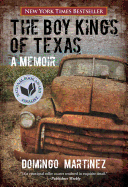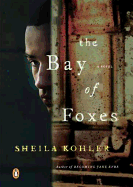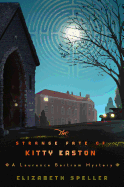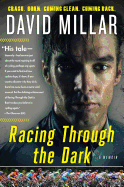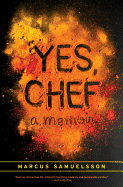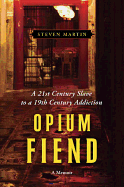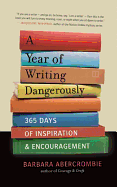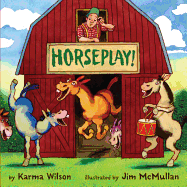Week of Tuesday, July 3, 2012
Over the past few issues, we've told you about some of the great fall fiction we're looking forward to. This time, we look at nonfiction.
The Oath: The Obama White House v. the Supreme Court by Jeffrey Toobin (Doubleday, September) Toobin, senior legal analyst at CNN, has been writing about the Court for some time (The Nine). He knows whereof he speaks, and has waited until after the momentous health care decision to finish this book.
Elsewhere: A Memoir by Richard Russo (Knopf, October) Pulitzer Prize winner Russo's memoir about his childhood is certain to be thoughtful, moving and witty.
Short Nights of the Shadow Catcher: The Epic Life and Immortal Photographs of Edward Curtis by Timothy Egan (Houghton Mifflin Harcourt, October) Beginning in 1900, Edward Curtis documented more than 80 Native American tribes. Egan has written both a biography and an adventure story about an artist who had remarkable resolve.
The End of Your Life Book Club by Will Schwalbe (Knopf, October) Will and his mother begin reading the same books and having conversations about them while she undergoes chemotherapy. This book is an elegy for his mother, and a paean to the written word.
Consider the Fork: A History of How We Cook and Eat by Bee Wilson (Basic Books, October) Wilson is interested in how we have satisfied our need for and delight in food. Cutting, measuring, grinding--it's not been a straight trajectory at all, with the exception of the knife.
Spillover: Animal Infections and the Next Human Pandemic by David Quammen (Norton, October) Quammen is one of our premier natural science writers. Recounting adventures with the world's leading disease scientists, he explains that the strange new diseases emerging have one common thread: they originate in wild animals and pass to humans in a process called spillover. --Marilyn Dahl, book review editor, Shelf Awareness
Shout Her Lovely Name
by Natalie Serber
Mothers and daughters are the heart of Shout Her Lovely Name, a richly detailed and sensitively written story collection by Natalie Serber. Featuring in the majority of the stories are Ruby and Nora, an independent-minded young single mother and her increasingly rebellious daughter living in 1970s California. Serber charts the complex terrain of their unconventional lives and the fraught tug-of-war of love and hate that lies at the core their relationship.
Living on a teacher's salary, Ruby and Nora are always a hair away from making ends meet. Ruby is beautiful, always dating but never settling down; her most serious long-term relationship is with a married man. She struggles with alcoholism, to the point where she is forced to check in to rehab. As a teacher, however, she offers wisdom and strength to the girls in her class, encouraging them to embrace the feminism that is appearing on the horizon. Meanwhile, the plainer, less forceful Nora's challenge is to emerge from Ruby's shadow, and discover what her own desires truly are.
Perhaps the most compelling of the stories is "Shout Her Lovely Name," in which a family is torn apart by the daughter's anorexia. As the daughter's disease intensifies, so does her verbal abuse of her mother. Alienated from her daughter and from her husband, who blames her for the disaster, the mother faces the ultimate challenge of her life: loving her daughter in spite of everything, and keeping her alive.
Shout Her Lovely Name is a strong and elegant debut that explores in depth the great complexities of motherhood. --Ilana Teitelbaum, book reviewer at the Huffington Post
Discover: A strong debut story collection that depicts, with elegant and precise detail, the challenges of motherhood and family.
The Frost on His Shoulders
by Lorenzo Mediano, transl. by Lisa Dillman
Lorenzo Mediano's The Frost on His Shoulders is a tight little masterpiece, told by an unnamed rural schoolteacher who begins by assuring us that the half column of print buried deep in the newspaper was wrong about the tragedy that happened in November 1934, in a small village in the Spanish Pyrenees. "Of course, I might be wrong," he qualifies; "no one ever really knows for sure what dwells in men's hearts."
Ramón Gallar is a bright, handsome boy with blue eyes, a shepherd since he was eight, who loves reading and borrows books from the schoolteacher. He falls in love with Alba, the daughter of wealthy Don Mariano, the most powerful man in the mountains. Ramón works long, exhausting hours, saving the pittance he earns for a life with her.
Scornfully rejected by the girl's father, Ramón defies Don Mariano, swearing that he will return with money, and becomes the legendary smuggler known as the Desperado, working the border into France. There's a folkloric, larger-than-life quality to Mediano's style of narration--like a tale told so often everyone knows it by heart--as the epic showdown between Ramón and Don Mariano draws near.
Laced with the fears and beliefs of a brutal mountain world, the novel builds relentlessly to an unexpectedly horrifying ending. Every twist and turn in the story is crucial, and Mediano's melancholy schoolteacher brings it to a perfect surprise ending. The Frost on His Shoulders is an old-fashioned folktale of forbidden love told with genuine suspense, unabashed enthusiasm for the genre and breathtaking control. --Nick DiMartino, Nick's Picks, University Book Store, Seattle
Discover: A perfectly crafted tale of forbidden love in a Spanish mountain village in the 1930s, with tight prose that takes on a larger-than-life aura.
Bay of Foxes
by Sheila Kohler
Sheila Kohler (Becoming Jane Eyre) creates a subtle and erotic psychological thriller in The Bay of Foxes. A white French woman and famous writer, 60-ish, known as M., meets Dawit, a 20-year-old Ethiopian boy, in a Paris café. She invites him to live with her. He accepts: he has lost everyone and has been living in squalid circumstances.
M. and Dawit are androgynous in appearance; they are both tall and lean. He wears her clothes, takes on her mannerisms, becomes her right hand. He is, however, not interested in any woman sexually. She watches him sleep, begs him to pleasure her in any way he can; he obliges reluctantly.
Early on we learn how Dawit regards M.: "Despite her upbringing in Somalia, she has never taken the trouble to learn any of the languages of the country, he notes. He comes to know all about her intimate life, her work, her desires, but she knows very little about him. Like all colonizers, he thinks, she is ultimately the dupe."
Still, he is grateful to her for all she gives him--money, beautiful clothes, a fine place to live and the opportunity to play her piano and read her books.
One evening she tells him that she is going out to give a reading and will be gone all night. He immediately calls Enrico, his married tennis-playing friend, with whom he is wildly in love. She returns early and tells Dawit to go. Faced with an uncertain future, Dawit's solution to the problem is less than imaginative, but it is properly pragmatic. --Valerie Ryan, Cannon Beach Book Company, Ore.
Discover: A beautiful, well-educated young Ethiopian man is taken up by a much older white French woman with consequences unexpected by both of them.
Mystery & Thriller
The Other Woman's House
by Sophie Hannah
Connie Bowskill logs onto a real estate website in the wee hours of the night after her husband is asleep. She is obsessed with a house in Cambridge that has gone on the market. When she clicks on the virtual tour, she is startled to see a dead woman lying in a pool of blood. She immediately summons her husband, but when he opens the virtual tour, there is no dead woman. Connie is determined to find the answer to this mystery because she isn't crazy--she saw a dead body. But her obsession with the house and with the mysterious dead woman may cost her everything.
Sophie Hannah (The Wrong Mother) employs vivid imagery and suspense to build a haunting atmosphere that envelops the reader. While the novel is set in England, it isn't difficult to imagine the same scenario in your own neighborhood, making the reading experience that much more intimate.
The Other Woman's House progressively brings into focus a distorted world created by obsession. Alternating between first- and third-person points of view helps to keep the images blurry for the reader--we can make out shapes, but not well enough to recognize what's lying beneath the surface. The darkness of a sick mind is chillingly terrifying, but readers will find it difficult to tear themselves away from the book until they reach the conclusion. --Jen Forbus of Jen's Book Thoughts
Discover: A dark, psychological thriller that will have you changing all the locks on your doors.
The Strange Fate of Kitty Easton
by Elizabeth Speller
In 1911, five-year-old Kitty Easton disappeared from her bed without a trace. Years later, archeologist and amateur detective Laurence Bartram is invited to the family manor to study the unusual Victorian church on the grounds; there, he finds the Easton family unable to escape the shadow of the girl's disappearance, and the Wiltshire country town unable to forget the many deaths of their beloved soldiers. When a kitchen maid goes missing and a woman's body is discovered in the church, Bartram finds himself drawn into the family secrets, the town's gossip and the forgotten places of the Easton Deadall manor.
At its surface, Elizabeth Speller's The Strange Fate of Kitty Easton is a mystery novel centered on the disappearance of a little girl, but Speller expertly peels back the story's layers to reveal a rich tapestry of English country life in the years following the First World War, bringing forth themes of loss, blame and politics. Her characters reveal the long-lasting impact of the war on civilian and soldier alike, while bringing to life the era's complex relationships between town and manor, upstairs and downstairs, young and old. Speller's descriptions of the manor house itself, and the decorations of the church, are similarly rife with historical detail. The Strange Case of Kitty Easton proves a delightfully layered, intricate novel of kidnapping, murder and architecture--a brilliant reimagining of the classic manor-house mystery of British literature. --Kerry McHugh, blogger at Entomology of a Bookworm
Discover: A delightfully reimagined treatment of the classic British manor-house mystery.
Biography & Memoir
Racing Through the Dark
by David Millar
David Millar was an avid bicycle road racer in his teens, and after he turned pro at age 22, he raced in all the big European events, including the Tour de France, where he wore the yellow leader's jersey. He resisted doping for years, but not forever; he was eventually busted for the illegal use of performance-enhancing drugs. His story was, perhaps, not highly remarkable in a sport already ridden with doping scandals, but it became noteworthy when he spoke out about his experiences, took a strong anti-doping stand and returned to the sport as a high-profile--and still highly accomplished--"clean" racer. Racing Through the Dark is his story.
Millar's memoir begins in childhood and follows through rocky years on the pro circuit, the painful decision to dope after abstaining for years, the details of his bust and the raging alcoholic haze of his ban before returning to the sport. It includes anecdotes featuring many of pro cycling's biggest names, including Mark Cavendish, Stuart O'Grady and Lance Armstrong. Millar's voice is appealingly open and artless. He takes full responsibility for his poor decisions even as he criticizes pro cycling's traditional code of silence that overlooks or condones widespread use of illegal drugs. While Millar excoriates the culture of doping, he doesn't use it as an excuse. He comes across in the end as a surprisingly honorable figure, whose continuing professional career offers a final theme of redemption. --Julia Jenkins, librarian and blogger at pages of julia
Discover: The unexpectedly inspirational story of a pro cyclist's "clean" return to the sport after doping.
The Boy Kings of Texas
by Domingo Martinez
Domingo Martinez was born in the early 1970s in Brownsville, Texas, on the Mexican border. His youth was marked by violence and family drama; he grew up wanting only to escape, but unsure how to do so. The Boy Kings of Texas introduces readers to Martinez's embarrassing, philandering father; his terrifying, work-obsessed grandmother; his older sisters (two of whom successfully pose for a short time as rich white girls); his generally forgotten mother; and centrally, his older brother, Dan. (There's also the passed-down story of his grandfather, who died young--a Mexican criminal celebrity recalled as the Brer Rabbit, the Billy the Kid, the Rhett Butler of his day.) Martinez describes in glaring, painful detail his drug-dealing friends and family--one time, he bought pot from two local thugs who turned out to be his uncles but who didn't recognize him through their drug-induced haze--and his gradual, excruciating withdrawal from Texas and the life he'd always known.
The Boy Kings of Texas eventually follows Martinez to Seattle and his agonizing attempts at starting fresh there, handicapped by a misguided childhood whose dominant lesson was machismo at the expense of all else. While a final, happier ending is hinted at ("but that is another book"), this memoir is concerned with the deep distress of a bordertown kid unclear on his place in the world. Martinez's story is heartrending and uncomfortable, but he maintains a surprising sense of humor that keeps his reader cringing and rooting for him. --Julia Jenkins, librarian and blogger at pages of julia
Discover: A starkly honest memoir of growing up on the Texas-Mexican border in the 1970s and '80s, with a wry twist.
Yes, Chef
by Marcus Samuelsson
Marcus Samuelsson's life story seems unbelievable: orphaned in a tuberculosis epidemic that swept Ethiopia when he was two, he was adopted by a family in Sweden and grew up there, learning to love gravlax and lingonberries.
Samuelsson often cooked with his adoptive grandmother, and when his hopes of being a professional soccer player were dashed, he turned to the restaurant industry. He cooked in Sweden, Switzerland, France, Austria and on cruise ships--working long, hard hours for little pay in his determination to become a top chef. His passion for cuisine eventually brought him to New York City, where he unexpectedly became the executive chef at Aquavit, snagging three stars from the New York Times when he was just 24. And his meteoric rise to chef super-stardom hasn't ended there.
Yes, Chef is the story of Samuelsson's fascinating career and life. As an American citizen who is ethnically Ethiopian and culturally Swedish, he defies categorization. As one of a very few top-tier black chefs, he frankly discusses his attempts to help other young black people follow the trail he has blazed. The reader is drawn into both the fast-paced world of the professional kitchen and Samuelsson's complicated African-European-American life. Yes, Chef will make your mouth water with vivid descriptions of food and enthrall you with images of Sweden, Ethiopia and New York City. Samuelsson not only knows how to craft decadent, exotic meals; he also knows how to write a very compelling story. --Jessica Howard, blogger at Quirky Bookworm
Discover: The astounding life story of Marcus Samuelsson--born in Ethiopia, raised in Sweden, now a top American chef.
Opium Fiend: A 21st-Century Slave to a 19th-Century Addiction
by Steven Martin
Steven Martin opens Opium Fiend with a firsthand account of the worst part of opium smoking: withdrawal. It's not his first time attempting to quit opium "cold turkey," nor will it be his last.
Martin's life with opium began when a fascination with East Asian art and culture drew him to Thailand, with regular visits to Cambodia, Vietnam and China. At first, he was drawn not to opium itself, but to the variety of paraphernalia used to smoke (or, more accurately, to vaporize) the drug. Opium Fiend reads, in its first chapters, like a love letter to the remarkable artwork of opium paraphernalia, as well as the thrill of the collector's acquisition of both new pieces and knowledge about his chosen field. It's a fascinating exploration of history as well as a good read.
Martin's passion for opium paraphernalia, however, led to another passion: smoking opium itself. Like many users, he started out by merely dabbling, but the quest to learn more about the 19th-century drug culture that produced these accoutrements led him, eventually, to a 30-pipe-a-day habit. Martin paints an intimate and straightforward portrait of his journey down this road, culminating in a realization of the most sobering fact of all: an addiction may be abstained from, but it has no real end. --Dani Alexis Ryskamp, blogger at The Book Cricket
Discover: A journey into the lost art of opium smoking, its culture, habits and history, led by a guide with a genuine feel for his subject.
Reference & Writing
A Year of Writing Dangerously: 365 Days of Inspiration and Encouragement
by Barbara Abercrombie
Books about writing walk a fine line. A good writing book provides support and inspiration, but a book that is too dense or too thorough risks bogging down the reader and creating another in the long line of distractions that await anyone trying to write. Other books about writing, though, are simply too good; the desire to finish reading them beats out any nascent desire to put one's own pen to paper. In A Year of Writing Dangerously: 365 Days of Inspiration and Encouragement. Barbara Abercrombie (Courage & Craft) breaks down her advice to writers into 365 short passages, one for each day of the year. The passages are numbered but not dated, allowing writers to begin whenever it suits them.
In this way, Abercrombie provides ongoing assistance to writers as well as an incentive to hit the desk--I wonder what today's advice is?--without becoming yet another diversionary project. Meanwhile, the daily advice and encouragement itself is well-crafted and engaging, balanced in such a way that it generally manages to be helpful without being overbearing or confusing. Many days contain wisdom of the "just do it, write the most awful stuff in the world, get your pen on the paper and you cannot fail" variety. Others provide concrete advice, while a third category provides brief glimpses into the lives of renowned writers--real-life examples of how writing is always work, but never impossible. --Dani Alexis Ryskamp, blogger at The Book Cricket
Discover: A year's worth of encouragement and support for writers of both fiction and nonfiction, designed to actually get you writing.
Children's & Young Adult
Summer of the Gypsy Moths
by Sara Pennypacker
Sara Pennypacker's (the Clementine series) moving story of a pivotal summer on Cape Cod explores the growing trust between two opposite girls forced to mature before their time.
Narrator Stella, who's almost 12, comes to live with her great-aunt Louise after her grandmother dies and her mother heads off to parts unknown. Louise takes care of the summer cottages for George Nickerson on Cape Cod. Stella loves the water, Louise's blueberry bushes and how everything has its place in Louise's house. The orderliness reminds Stella of her beloved grandmother, Louise's sister. Louise also takes in an orphan named Angel, to keep Stella company, but the two are "oil and water." When the girls get home from school one day to discover Louise dead in front of the TV set, however, they must band together. Determined to avoid family services, the girls hatch a plan to pretend Louise is laid up with a broken ankle and run George's cottages themselves.
Their scheme involves episodes of laughter and poignancy, as the girls' teamwork creates a mutual respect. Where Angel once made fun of Stella's meticulous ways, she starts to see the value of placing things where they belong; and for her part, Stella begins to ease up on her rules. Pennypacker creates adults as compelling as her two young heroines, who eventually figure out where they belong. Like Clementine, Stella's quirks and offbeat humor make her real and lovable. --Jennifer M. Brown, children's editor, Shelf Awareness
Discover: Two stubborn, funny and resourceful young heroines forced to work together when their guardian dies.
Horseplay
by Karma Wilson, illus. by Jim McMullan
The team behind Hogwash tells another comical farmyard tale, this time starring a group of horses that play by night and sleep all day.
The poor farmer can't figure out what's wrong. Maybe they're afraid of wolves at large. He decides to stay up and keep watch. What he spies instead is pure horseplay. "Those horses didn't sleep one bit./ They frolicked on the loose./ They joined in games like Hide-and-Seek,/ Leapfrog, and Duck, Duck, Goose." In a trio of vignettes, McMullan (I Stink!) depicts a tan horse lifting its right front paw in front of his eyes while the other horses hide, lining up to leap over a gray horse, and taunting an unfortunate donkey while the "play some Pin-the-Tail." Wilson's (Bear Snores On) rhyming couplets milk the humor from the horses' antics and mirror their ceaseless efforts to outsmart the farmer. When they're confined to the barn, they pass out poker chips, and snack on seven-layer dips. Even when the farmer stays up all night in the barn with the horses to ensure there's "No Horseplay!" the critters still get the last laugh.
Children who do their best to postpone bedtime will see themselves in these humorous horses, brought to life by McMullan's carefree watercolors and bold outlines. And parents will sympathize with the farmer, his stamina outmatched every time by the coltish energy of his four-legged charges. --Jennifer M. Brown, children's editor, Shelf Awareness
Discover: A rollicking farmyard rhyme about postponing bedtime from the creators of Hogwash.



